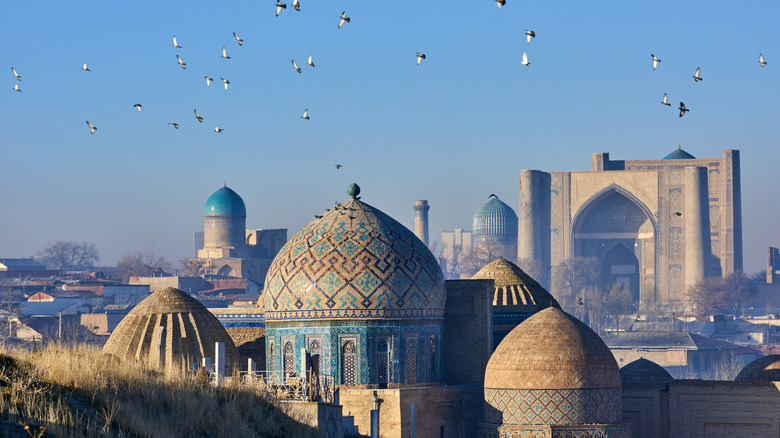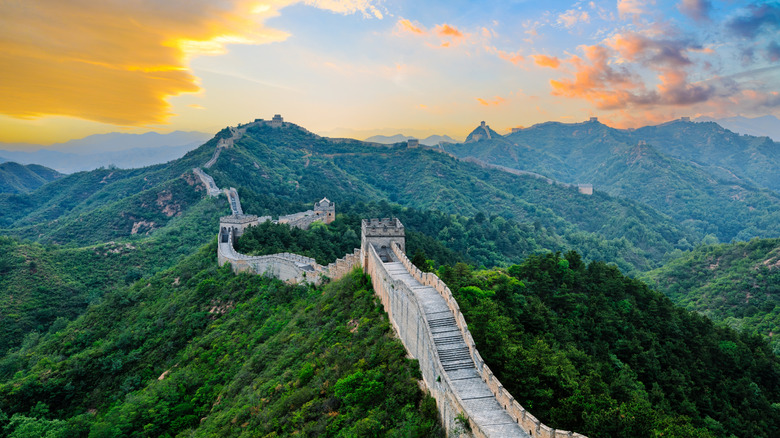What It Means When Your Travel Destination Is Labeled As A UNESCO World Heritage Site
When traveling the world, we often seek the thrill of awe-inspiring landmarks that represent the wealth of different cultures and civilizations that have existed throughout time. Exploring the planet is a way to connect with the rich tapestry of human and natural history. Some of the places we recognize as the world's most famous landmarks carry the prestigious label of UNESCO World Heritage Site for their outstanding universal value to humanity, from the ancient Roman baths in England to the pueblos in Colorado's Mesa Verde National Park. Being recognized by the United Nations Educational, Scientific, and Cultural Organization (UNESCO) signifies something extraordinary, but what exactly does the designation mean, and why are certain places chosen? What responsibility do we, as travelers, bear when visiting these unique, globally protected treasures?
These sites may be cultural (think ancient cities, temples, or man-made monuments) or natural, like mountain ranges, forests, or even coral reefs. Some sites contain both cultural and natural significance and are deemed important not just to one nation but also to the collective heritage of humanity. As of 2025, there are over 1,200 heritage sites spanning across more than 165 countries. These include the gargantuan Great Wall of China, Machu Picchu in Peru, and the Galápagos Islands, where you can enjoy a unique island cruise.
UNESCO highlights the world's most outstanding places
These irreplaceable and vastly unique sites offer insights into the planet and humanity, showing the vast diversity of our broad and varied civilizations. So, how is a site selected for the prestigious title of UNESCO World Heritage? UNESCO has developed a certain set of criteria to determine whether a location will be granted the title, including specifications such as whether a place is an outstanding example of ecological and biological processes or if it bears exceptional testimony to a cultural tradition. Other criteria include monitoring whether a site exhibits an important interchange of human values, is a masterpiece of creative genius, or bears testimony to human history.
An advisory board made up of individuals from the International Council on Monuments and Sites (ICOMOS) and the International Union for Conservation of Nature (IUCN), and the International Centre for the Study of the Preservation and Restoration of Cultural Property (ICCROM) assess each location, which is initially selected from a list of nominated sites that come from each country. These bodies evaluate each selection before the site is officially inscribed by the World Heritage Committee.
Founded in the aftermath of World War II, part of UNESCO's mission is the belief that peace is built on the intellectual solidarity of humanity. By promoting international collaboration and appreciation through education, science, and communication, it aims to preserve the world's natural and cultural heritage, with the idea being that the traditions of each nation make up the roots of humanity. The World Heritage Convention was formalized in 1972, promoting diversity, freedom of expression, and sustainable development through preservation and education.
Conservation of natural and manmade sites of importance
Being recognized by the UNESCO World Heritage Association can make a significant impact, helping a location earn global prestige and often resulting in increased tourism and a boost for local economies. It can also help fund preservation efforts and act as a protective shield for the sites, obligating governments to take care of the places associated with UNESCO. However, the benefits are not only economic or symbolic, as a designation will often lead to improved conservation practices in the area, preventing sites from threats like urbanization, deforestation, or neglect.
When visiting these often sacred spaces, it is important to pay respect to the grounds and cultures that you are visiting. Certain rules are enacted by UNESCO to protect the sites, with stipulations such as staying on marked paths, following photography rules (especially in areas with wildlife or old artwork), and respecting the local customs in religious places, which may mean dressing in an appropriate manner.
A World Heritage designation doesn't just give responsibility to the local governments; it also invites tourists and the local community to contribute to conservation efforts also. As a tourist, you can help in the preservation efforts by visiting heritage sites during off-peak season to reduce the strain on the workers and by supporting the local economy by spending money on local food, crafts, and guides. It is also important to stay informed about the site's local history. All this is to say that when you visit a UNESCO Heritage Site, you're entering a space that exists to preserve human memory, so step back, book your ticket to Petra in Jordan or the world-famous Villa d'Este along the shores of Italy's Lake Como, and appreciate the sublime wonders of the world.


